Xtar PB2 Charger & power bank


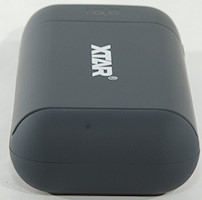
This is a 18650 charger and power bank from Xtar.
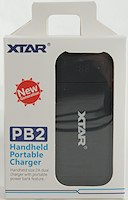

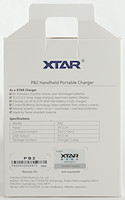

It arrived in a white cardboard box with a window in and some specification on it.
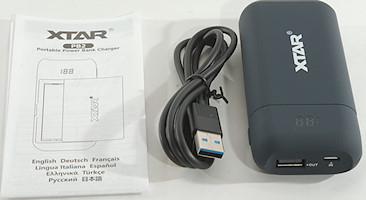
The box contained the charger, a usb cable and a instruction sheet.

The charger is usb powered with a micro usb input and a usb output for the power bank function.
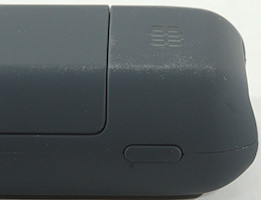
This button is used to turn the power bank on, this is only needed when checking the power level, it will automatic turn on when a load is connected.
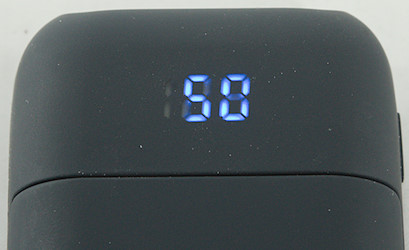
The display shows from 00 to 100, depending on how much capacity is in the power bank. While charging one of the digits will flash. When powered on or reset is will show a counting sequence: 00-11-22-33-44-55-66-77-88-99- for external usb power and 99-88-77-66-55-44-33-22-11- for internal battery power.
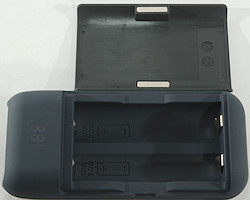
The lid uses magnets, this makes it fairly easy to open when you stick you nail into a small slot. The magnets are strong enough that you can easily lift the box in the lid, when it is filled with batteries.
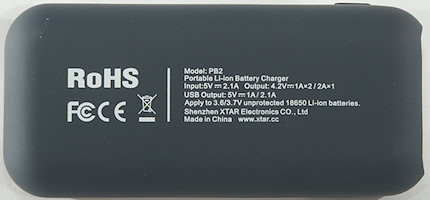


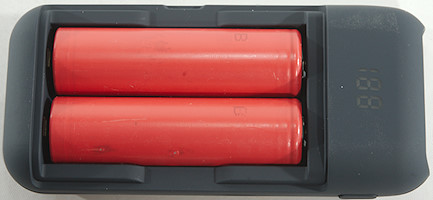

This charger only supports unprotected 18650 batteries.
Measurements
-
Power consumption from usb when idle with no batteries is 9mA
-
Will charge one battery with 2A
-
Will charge two batteries with down to 1A on each (Lowest voltage will get more current)
-
Will discharge a full battery with about 0.5mA when powered.
-
Will discharge a full battery with about 0.1mA when not powered.
-
Below 0.5V the charger will report error
-
Between 0.5 and 3V the charger will charge with low current (200-300mA)
-
Above 3V the charger will use full current.
-
Will not restart charging if voltage drops.
-
Will restart charging if battery is inserted.
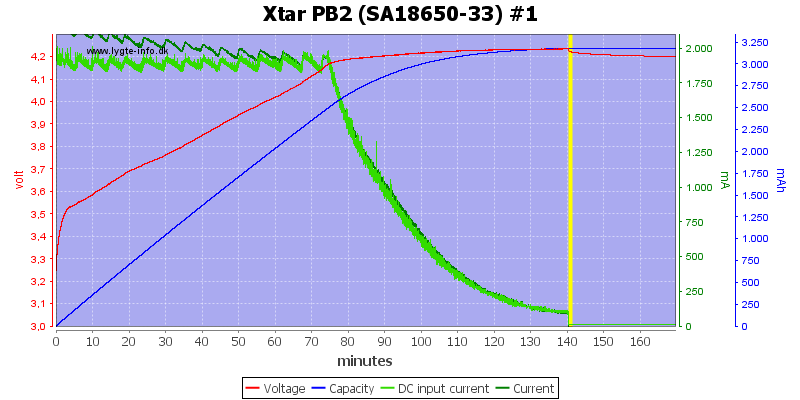
A nice CC/CV charge curve with termination around 100mA

Second slot looks similar.
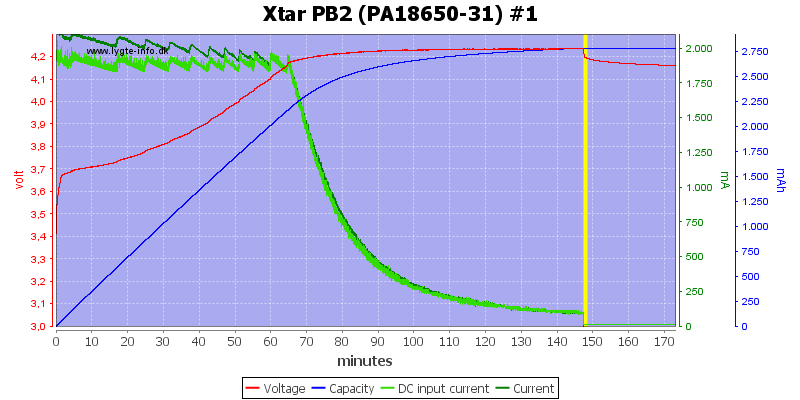

These two other batteries is also charged nicely.
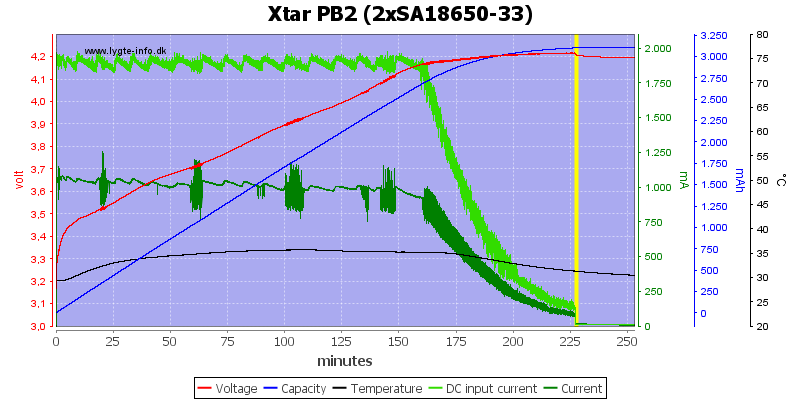
With two batteries the charge current drops to 1A to keep the usb input current at 2A.
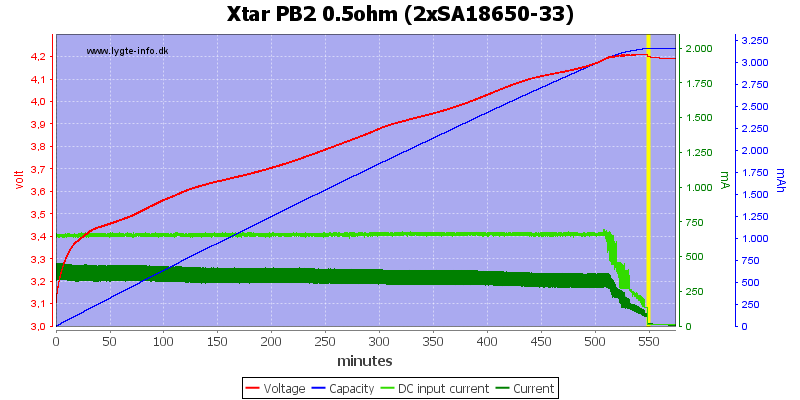
Adding 0.5ohm resistance in series with the power supply to simulate a long cable or weak supply shows that the charger will reduce usb and charge current, but the charging works fine.
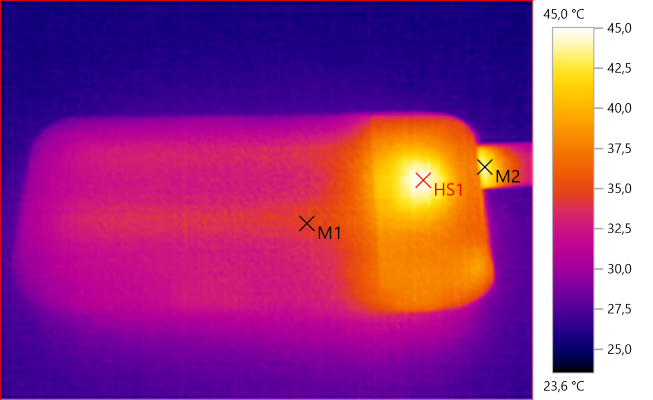
M1: 34.6°C, M2: 43.9°C, HS1: 45.0°C
There is some electronic inside the charger that gets a bit warm, but the battery box do not look warm.
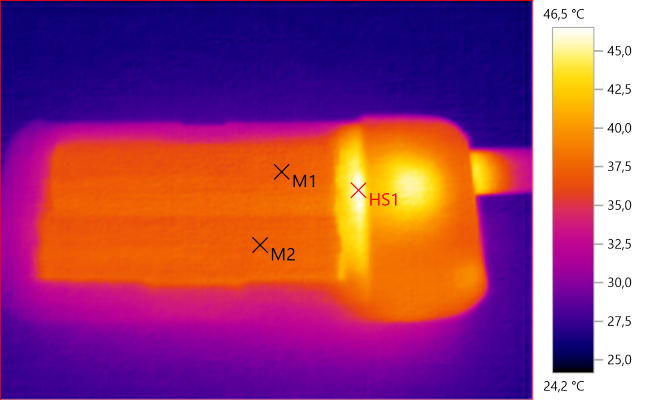
M1: 37.2°C, M2: 37.3°C, HS1: 46.5°C
Batteries are below 40°C while I am charging with lid on, this is fine.
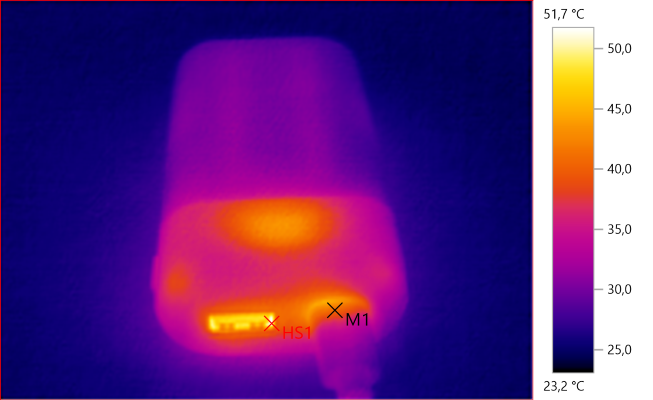
M1: 40.7°C, HS1: 51.7°C
And the hottest part of the charger electronic do not look very hot.
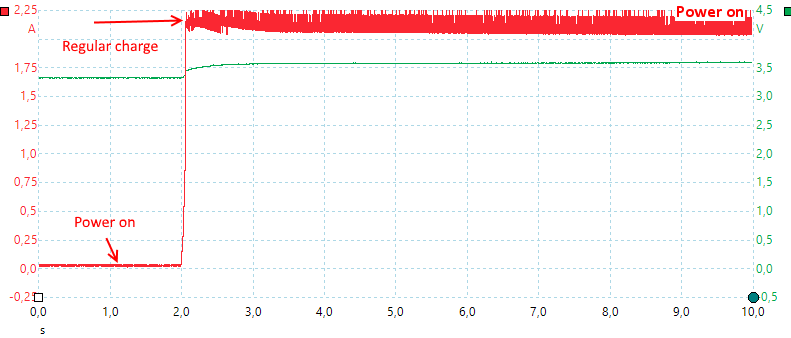
The charger is very fast to start, it only needs about 1 seconds.
Power bank
-
Will discharge a full battery with about 0.1mA when not powered.
-
Usb output turns off after 45 seconds with load below 290mA, with no load it turns off after 10 seconds.
-
Usb input and output is not directly connected, no output voltage leaks to the usb input.
-
Cannot be used as a UPS, output turns off when usb power is removed.
-
Usb output is coded with usb charger (DCP)
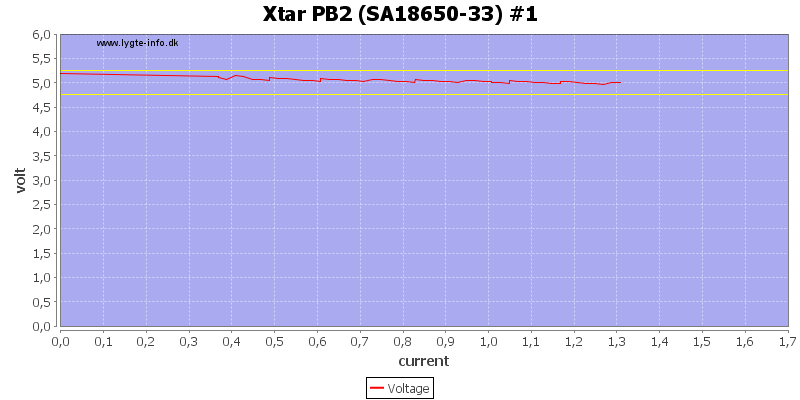
With one battery the charger is rated for 1A and overload trips at 1.3A, this looks fine.
All load sweeps make a measurement at 0 then jumps to a bit above 300mA to avoid auto turnoff.
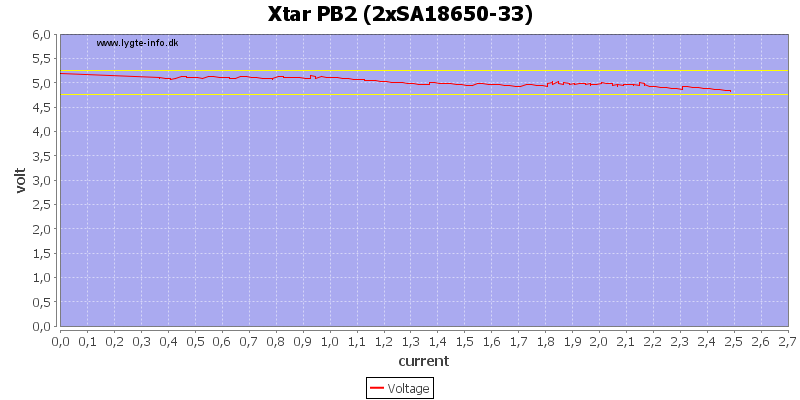
With two batteries the rating is 2A and it can deliver a bit above 2.4A.
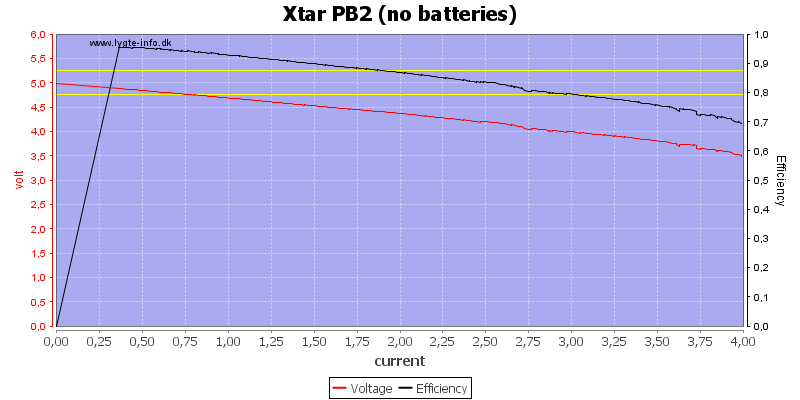
With no batteries in the charger, but usb power connected it passes the power through, but there is some voltage drop.
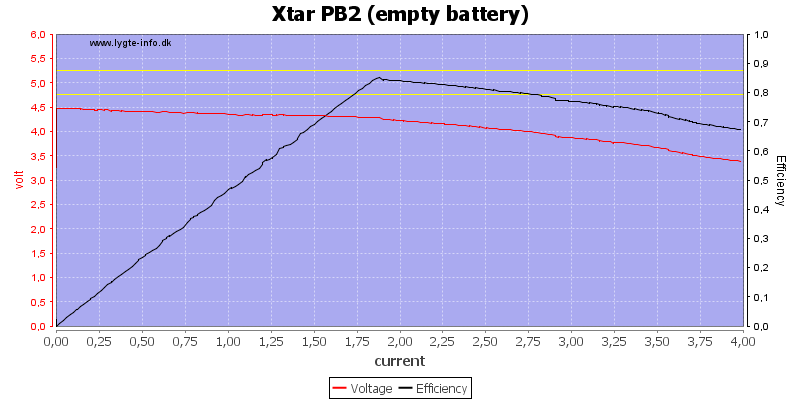
With one empty battery the charger will charge the battery, but keep the usb power draw at 2A, this is the reason for the low efficiency at low current.
Below efficiency curve is only valid with one battery in the charger
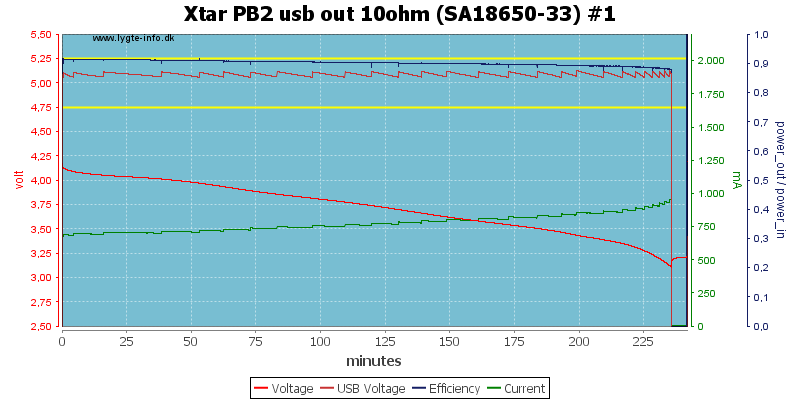
As a power bank it can easily deliver 0.5A until the battery is down to about 3.2V, where it turns off.
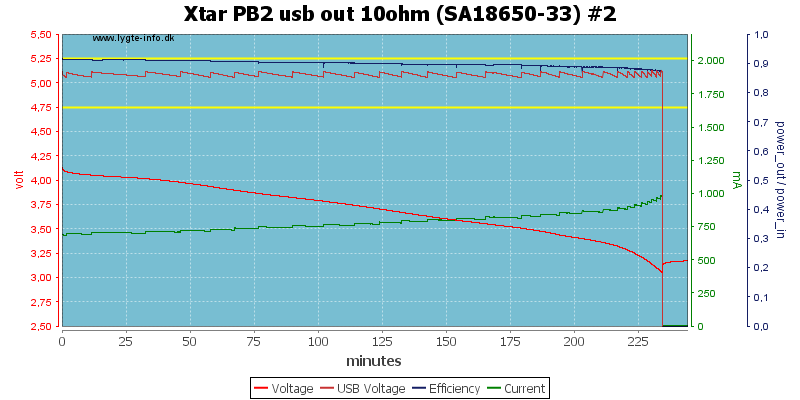
Second channel looks the same.
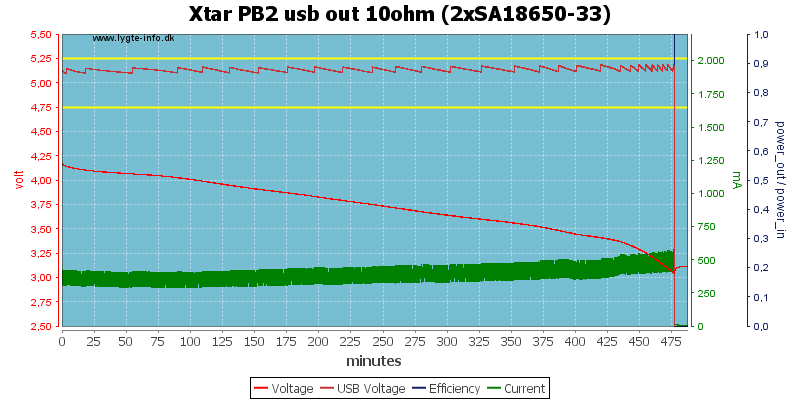
With two batteries the time is slight more than double up.
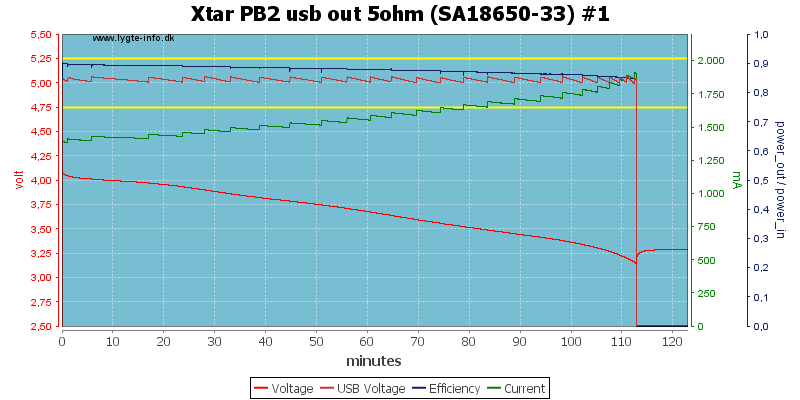
One battery can also handle 1A load and the voltage stays stable (more or less) until the battery is empty.
There is no overload protection here, charger depends on overload protection in the usb charger used to power it.
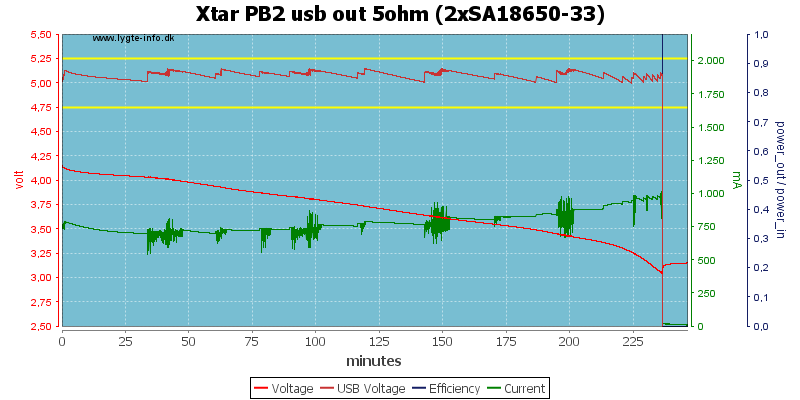
With two batteries the time is again more than double.
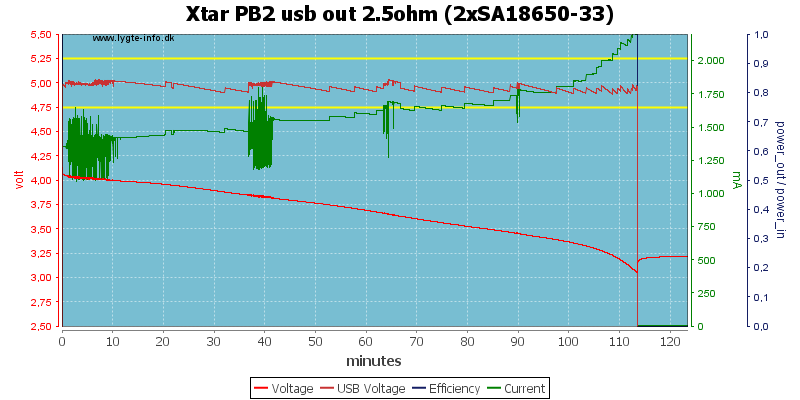
For 2A output two batteries are required.
The output voltage jumps up and down on all the curves, but stays within the required usb range.

There is 24mV rms noise and 287mVpp noise.

There is 157mV rms noise and 405mVpp noise.
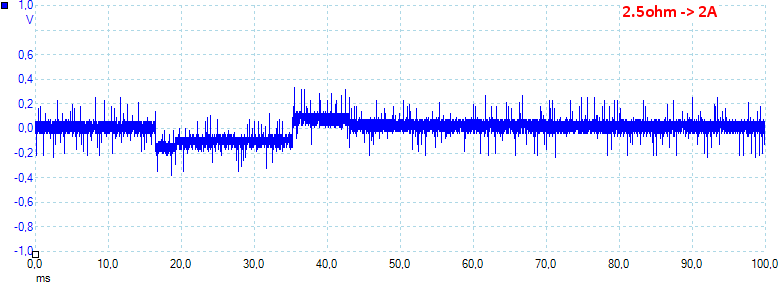
There is 72mV rms noise and 869mVpp noise.
Conclusion
This charger and power bank has a good size for a two battery device and the magnetic lid is easy to open. The charging looks good, but batteries must be able to handle 2A charge current.
The power bank has enough power to maintain output voltage, until the batteries are empty, the coding is also fine, but I could have wished for lower noise on the output, this jumping up/down in voltage may force some devices to a lower charger current.
I will rate is as a fairly good power bank and charger.
Notes
The charger was supplied by XTAR for a review.
Here is an explanation on how I did the above charge curves: How do I test a charger